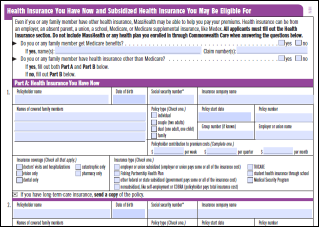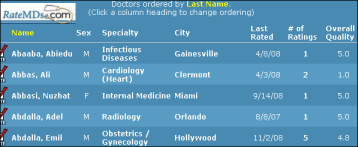Intelligent Healthcare Information Integration 3/11/09
Step 2 of the “Official Grunt-in-the-Trenches Complete U.S. Healthcare System Overhaul and National Health Information Network in Five Easy Steps Disruptive Innovation Package”
EHR? PHR? Phooey! How about an IHR?
I know, I know. I’m out of step with my previously stated agenda. I was next going to discuss how we can achieve two thirds of the NHIN by 2010, but, after some inquiries I received and after Mark Anderson’s recent superb article, “Beware, The ICE Age is Coming,” I felt it would now flow more gracefully directing attention toward the foundation upon which we can achieve that near 70% NHIN integration.
First, a disclaimer or two:
1) Some of my favorite people are EHR vendors/developers/marketers/implementers/salesfolk. I enjoy and respect them and what they do immensely.
2) I love my EHR (usually.)
3) Mark Anderson and I, along with several other great folks, have worked together on a few of these ideas for some time now.
4) As yet, there are no financial entanglements which need disclosed. (Damn!)
Now, on with the show…
Unfortunately, the tremendous advantages of a capitalistic system in inspiring new innovation and diversity of product development has given us 3-400 EHRs, any one of which has very little ability to communicate directly with any one of the others. Then, of course, there are the multiple silos being created via RHIOs, HIEs, the old CHINs, etc. Diversity of offerings has led us away from, not toward, the NHIN. The complexity and sheer volume of offerings is intimidating even for seasoned geeks, no less the everyday doc who has trouble with a DVR. Few of the mass required to reach the proverbial tipping point for EHR adoption see it as even being a possibility in their career lifetimes. And, so far, I can’t say I blame them.
To reach the masses, we should be listening to their concerns. I wonder sometimes how many EHR developers actually bother to ask a non-techie-oriented consultant to review their work. If the only folks you ask about product development are those who already “get it,” how do design to entice those who are yet to? I doubt Apple would have survived if they hadn’t seriously taken “Joe Sixpack” into account.
So, as the medical “Joes” have rarely been consulted, is it any wonder most of them have had little, if any, interest in adopting EHRs – especially when what they are promised includes a major interruption in their workaday lives. Changing workflows is a horrendous undertaking, requiring enormous time, energies, and, often, income reduction, at least for a time. There are no “plug-n-play” systems, no turn-it-on-and-do-what-you-already-do EHR wonders. Most current offerings require an enormous effort, hence the prerequisite need for physician champions to cheerlead, coax, and cajole cohorts into the commitment.
I don’t think the majority of my medical colleagues should be treated as cattle, herded, prodded, and driven toward the auction house. (OK, maybe a few deserve that.) But, physicians, it is true, are generally not pioneers. The majority do not blaze trails. They do not lead movements. But, the tremendous attribute which can generally be stated about most physicians is that they respond to need. That’s why many, if not most, became health care providers in the first place. So why is it that this very basic truism has been so glaringly ignored by the world of electronic medical record developers?
If physicians, by their basic nature, respond to need, doesn’t it make ultimate sense to develop a motivational tool that engages this semi-Maslovian drive to entice them into a desire for EHR adoption rather than continuing to “push mules?”
If we’re to stop pushing mules, we must employ strategies that entice – i.e., carrots. We must avoid threatening or intimidating change, as change in and of itself is often frightening. We must utilize tools already familiar, comfortable. We must identify true needs and design strategies to both meet them and to take advantage of them in generating “adoption drive.”
This same argument plays equally well when discussing PHR adoption by the general public. The masses have not swarmed to their use. Why? I believe it is because, just as with EHR design, we have neglected to consider some basic human motivations. Consider the fact that Facebook reached 50 million users in 1/20th the time it took television to do the same. Why? It used a tool which many already owned, with which they had familiarity, AND it met several underlying needs including the desire to interact with others while giving users a little ego boost having a little “Look At Me, World” home on the Web. Basic human motivations: we need to engage them.
To address these oversights and to “stop pushing mules,” I suggest we consider a different approach to healthcare information integration, not focusing upon the technology aspect (very Web 2.0-ey) but rather spotlighting the needs, the use of currently proven tools, and the natural human motivations we can engage to help inspire adoption and continued use.
Thus, the “Grunt-in-the-Trenches Beyond EHR/PHR Grand Healthcare Digitization Project What Ifs:”
*************
What if…we start with a system designed for the end user, not the giant hospital or RHIO, but for that single grunt in the field so that he or she can provide the services he or she provides in the manner most comfortable for him or her with an electronic interface he or she can enjoy and adapt for his or her unique needs? (Big systems that attempt doing everything for everyone often have poor usability when they trickle down to us grunts.)
What if…we took that end user-friendly provider system, included a general populace-friendly tie in, and pivoted this patient-centered tool around an entire small community and its associated community hospital including everyone including doctors, hospital, EMS, home health, hospice, schools, long term care facilities, police, sheriff, fire departments, emergency management agencies, health departments, employers, and the general public – everyone who might have need for some small piece of healthcare data – utilizing the entire community as a multifaceted motivational driver for adoption? (Patient-centered, but community driven as communities drive individuals. Consider mob mentality, Facebook, soccer crowds.)
What if…we make the wild assumption that sharing health data among providers is no different electronically than it is “paperly,” that what a provider can get now through laborious effort, fax machine, and telephone is essentially the same – only much, much slower? (I know a company who says they can tie legacy systems into a new, integrated system so that even current end users don’t need to buy a new EHR or PHR to participate, identity management is enabled, and security is priority.)
What if…we use an open system (open, not unsecured) that doesn’t create silos and we help health systems and providers understand that patient health data is not “owned” by anyone except the patient, that sharing that info is not counterproductive to corporate profits but rather contributive once all are duly linked? (Healthcare giants must give up the notion that sharing a person’s health data is akin to a traitorous CIA leak. I can’t imagine an auto shop refusing to share someone’s car repair history.)
What if…we design the roll out to the community with something like Java applets (compatible with most cell phones and computers) using push/pull technology to acquire information and participation in small sips, instead of asking folks to drink from the fire hose most PHRs now do? (Of course we’ll use computers, but, cripes, American Idol uses cell phone data collection every week! As there are over 4 billion registered cell phones in use around the world today, doesn’t it make sense to use a tool people already have and one with which they are not intimidated?)
What if…we created several jobs within each community specifically to promote, educate, and assist end users in an ongoing fashion, instead of the two-to-a-few weeks training currently the industry norm? (If the entire community was “going live,” the need for support would justify and, indeed, require local help. Plus, who’d bitch about creating thousands of new jobs these days? FYI – there are some 2,000 such small communities and associated community hospitals across the U.S.)
*************
Mark Anderson laid out quite nicely some of the system requirements and benefits in more detail in his “ICE Age” article. While he limits his discussion to the integration of doctors and hospitals, something he has promoted for some time, here the discussion is for a COMPLETE community system, an entity for which the current lexicon has no definition. We’ve coined the process as Community Healthcare Integration (CHI) which achieves the Integrated Healthcare Community (IHC) utilizing the Integrated Health Record (IHR) – via each community’s own non-profit, by the way. See: http://worldchi.com.
To be clear, the IHR does not negate nor minimize any current EHR or PHR product. Rather, it is an overriding integration of that which currently exists into what I believe is a more accurate reflection of reality. We need specialty EHRs and PHRs; they are operationally helpful and discrete. But, personal health data is not separate and distinct from that data which a medical provider uses. The emphasis upon these two terms promotes a psychological barrier between providers and the general public. The last thing we need is for the application of technology to increase the gap and diminish the trust between providers and the public. There are far too many silos in healthcare already; the IHR model is designed to help eliminate separatization and promote integration. (Can you hear the NHIN segue?)
Still to come:
Step (now) 3: Two Thirds of the NHIN by 2010 (Yes, we will discuss funding & sustainability)
Step (now) 4: Equalizing the Playing Field (“Open” is not a Four Letter Word)
Step (still) 5: Verdant Health

Dr. Gregg Alexander is a grunt-in-the-trenches pediatrician and geek. His personal manifesto home page…er..blog…yeh, that’s it, his blog – and he – can be reached through http://madisonpediatric.com or doc@madisonpediatric.com.








The article about Pediatric Associates in CA has a nugget with a potentially outsized impact: the implication that VFC vaccines…